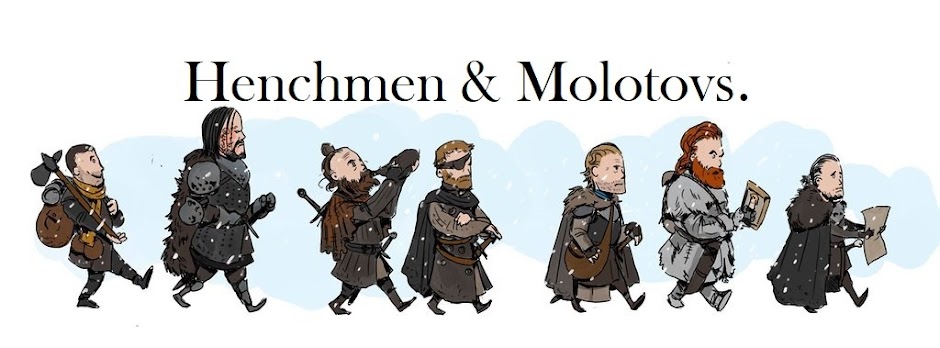We are taught as beginning Referees to construct random encounter tables on a bell curve. After all, mundane encounters (with men and common humanoids) will be much more common than ones with great and dangerous beasts.
This makes logical sense, but it doesn’t make for much fun. Why always the normal stuff? Why wouldn’t you want to throw cool monsters at the players? Bandits? They can see bandits every day. Give them the cockatrice or wyvern or displacer beast or a weird old illusionist.
Random encounters are rare enough: we only check for them once every so often. When one comes up, it should have the “wow” factor that will have players retelling their encounter for years. Therefore rather than bell-curve encounter tables, we will construct straight tables.
For each terrain type or biome, write down as many kinds of odd men and monsters that you like that might dwell there. Try to think up 10-12 entries. Then arrange these men and monsters into a list by ascending threat level. We call this a progressive encounter table.
At the outskirts of the biome, just roll 1d6 to see what comes up. But as you get deeper into it, it should get more dangerous, like going deeper into a dungeon. At deeper dungeon levels, things are more dangerous. In order to simulate this ramp up in danger, add some integer to your 1d6 roll. 1d6+1, 1d6+2, 1d6+10, whatever. Call this integer your hazard level. Since you arranged your denizens in ascending-threat order, your adjusted rolls will produce more dangerous encounters without the players feeling like it’s forced.
For small hexes, like a 1-mile hex, choose a single hazard value for the whole hex. But if you’re doing a six-mile hex, it’s okay to eyeball the territory and adjust the hazard value on the fly. A forest hex near farmland and a swamp would likely have an increasing hazard gradient as the party goes from dry land into the bayou.
Monster, Activity, Complication
Random tables are
good to use because they can bring the world to life. But if each time the
players meet monsters, they’re always doing the same things, then the world’s
verisimilitude breaks down. Why is the monster there? Is he always just waiting
to be killed? Of course not! Therefore, consider constructing three-column
tables.
The first column will be the monsters, as usual.
The second column will be six activities the monsters might be doing when the party encounters them. Hiding, patrolling, foraging, partying, healing a sick friend, looking to trade, on the prowl. Who knows? Just pick six obvious activities.
The third will be a complication the monster will have. Write down six things that might inconvenience a monster. Maybe it has a baby. Maybe it’s sick. Maybe it needs help with another monster. Maybe it’s being preyed upon right now by an even bigger monster!
By rolling on all three of these columns, you will have a monster, a purpose, and a complication – a ready-made interesting and vibrant encounter.
It will also give the players some information on how to shape the encounter to their advantage, and players love “fooling” the Ref. So let them
Here’s my chart for the Barren Steppe biome:
If I roll a 4, 1, and 4, then I have Dervishes, skulking about, but they need something the party might have – and they want to trade for it. Much more interesting than just some random holy men.
Try straight,
progressive, three-roll tables in your next game.



No comments:
Post a Comment
Stay focused.